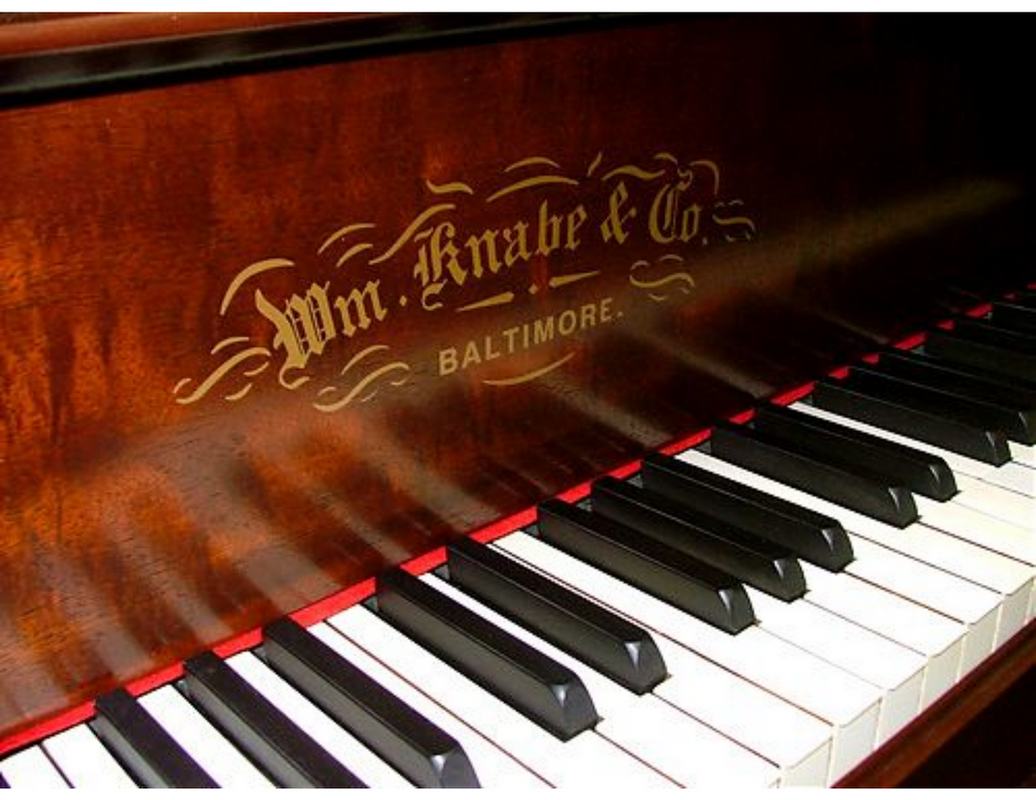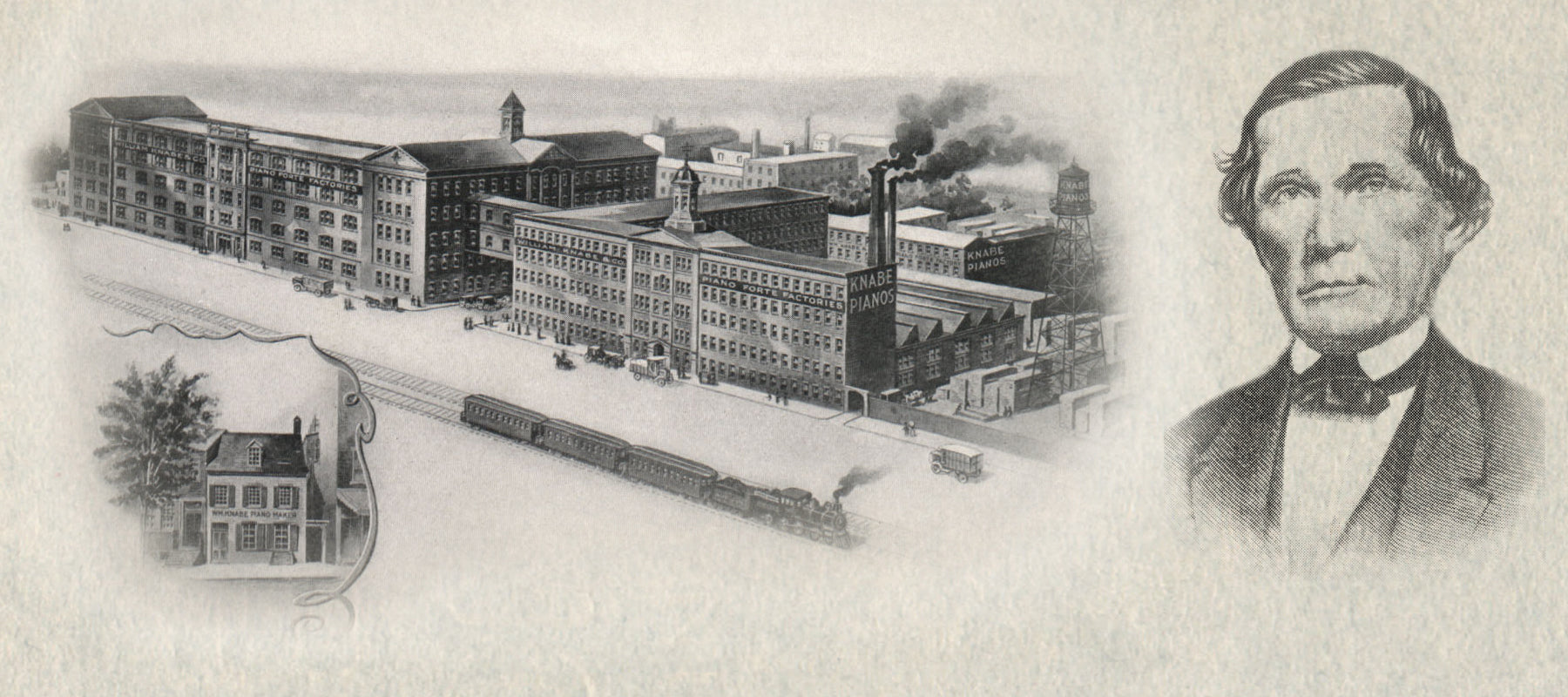A Timeline of Knabe Tradition
THE beginning
The Founding FatherKnabe’s rich history began more than 200 years ago when Wilhelm (William) Knabe was born in Kreuzburg, Germany in 1803. Knabe learned the art of cabinet and piano making through apprenticeships, dedication and hard work. After immigrating to the United States and settling in Baltimore, Maryland, Knabe began working under Henry Hartye, a well-known piano maker. In 1835, William formed his own business of buying, selling and repairing used pianos from inside his home.
Knabe partnered with Henry Gaehle to form the piano company Knabe & Gaehle, the genesis of Knabe’s storied history. Knabe & Gaehle built high-quality grands, uprights, and squares at a small factory in Baltimore and managed to compete with other larger, more established American manufacturers.
Knabe & Gaehle became a part of American history when in 1838,Francis Scott Key, composer of “The Star-Spangled Banner,” commissioned the company to custom-build a square grand piano for his home. The detail of these lavish, hand-carved pianos extended around all four sides of the rosewood case and down its massive legs, while the keys were surfaced with expensive mother-of-pearl. The piano was used by Key until his death in 1843 and currently resides in the Peabody Hotel in Memphis, TN.
The company was left in the stable hands of sons William and Ernest upon the death of William Knabe in 1864. With the outbreak of the Civil War and the resulting decline of the Southern market, the company managed to keep afloat by expanding their markets into the growing American west. In the later decades of the 19th century, Knabe grew to be one of the most respected pianos and very popular among consumers and professionals alike.
Peter Ilyich Tchaikovsky, the world’s greatest composer of his time, was the guest of honor for the official opening of Carnegie Hall in 1891.
Knabe sponsored Tchaikovsky’s appearance as guest conductor for the opening engagement and featured a grand piano that historic night as Tchaikovsky ushered in the evening’s concert and led the New York Music Society's orchestra in his Festival Coronation March.
Into a New Era
In 1926, Knabe recorded history once again, as it was chosen to be the official piano of the New York Metropolitan Opera. A Knabe grand piano was played by some of the great artists of that celebrated organization, including Rosa Ponselle, a mainstay at the New York Metropolitan Opera and one of the greatest sopranos of the past 100
years.
a bright future
Through the years, Knabe has been a part of such establishments as the American Piano Company, Aeolian Corporation, and Mason Hamlin. Today, the Knabe is the premium piano for Samick Music Corporation, one of the world's largest musical instrument manufacturers. SMC is proud to continue the manufacturing and production of these fine works of art, known throughout the world for their beauty of sound and cabinetry.
Knabe pianos are handmade, limited production pianos created in the finest tradition of over 300 years of piano crafting. Production pianos have their place in the world of music. They are tonally consistent and durable, but they lack the "soul" of a handcrafted instrument. Each handmade Knabe has its own personality. When you play a Knabe, you will sense the difference.The rich and wondrous tonal quality of the Knabe has often been described as the nearest approach to the human singing voice.Listen to the tone of today's Knabe - no piano in the world has a voice quite like it.
Many of the early upright and grand piano designs, originally created by Wm. Knabe & Co.and seemingly lost to antiquity, have been recovered by Samick Music Corporation, and many of those wonderful early design concepts have been incorporated into the Knabe pianos of today. Original Knabe concepts such as the solid spruce soundboard shape and dimension, bridge placement, and overall structural design add to capturing the critical essence of the Knabe piano along with the original Baltimore scale on many Knabe models. Only woods, metals, glues or natural fabrics best for each particular purpose are ever permitted in the Knabe.



